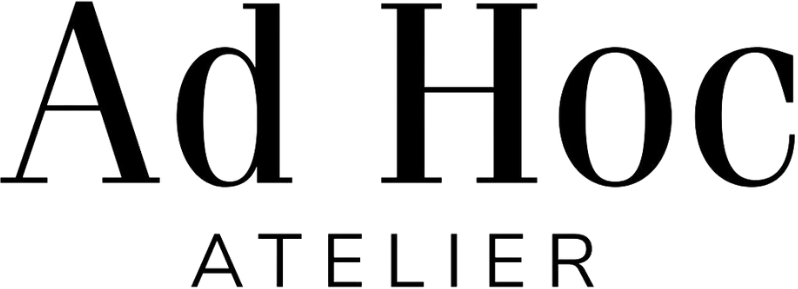What is a sustainable brand?
Discover when a brand can be defined as sustainable. Learn to know when fashion is sustainable for real, with our practical and simple suggestions
LAURA CHIARI
Contributor

What is a sustainable fashion brand?
A brand that can be defined as sustainable produces ecological products, but also in an ethical way. In fact, sustainability is not only linked to the environment and the use of sustainable materials. Sustainable also means making a product guaranteeing excellent working conditions and equal living wages for those who produce it.
If a brand is characterized by making a product using ecological fabrics with a low environmental impact, we can define it ecological. But to define it as sustainable in all respects we must investigate more, evaluating the transparency along the entire supply chain.
We always have to ask ourselves: what is the status of employees along the supply chain? Are they paid fairly, do they work in good conditions? We are well aware that by now most of the big fashion companies have outsourced their production to the poorest countries. This ensures lower labor costs and fewer controls.
In essence, they buy services from external suppliers, ie local industries. The basic problem is that in order to evaluate the sustainability of an international brand, one would have to dig deep into an extremely fragmented and hidden world.
The only solution is to rely on trade associations that protect the textile sector, which daily strive for greater transparency and more accurate information. In fact, it is not possible to evaluate the supply chain of a brand like Zara by yourself, since we are talking about hundreds of different suppliers and productions.

Sustainable clothing brands are difficult to recognize
As a rule, the bigger the brand, the lower the chances of tracking its supply chain, making it drastically lower the chances of it being sustainable. The first suggestion we give is to avoid buying from fast fashion brands, if you care about sustainability and ethical production.
We recommend opting for smaller and lesser-known brands, which offer style and quality solutions, often at competitive prices. Maybe those who follow the Slow Fashion movement. Clearly it is not always easy to find them, because they are less distributed than the big brands.
But, as with food, if you want to change things it's worth making an effort and doing careful research and selection. In this article we will give you valid online tools to evaluate the sustainability of a brand, so that you can proceed for a more prudent and informed purchase. If you want to know more about producing sustainable clothing, you should visit Italian Artisan, famous for bags, shoes, accessories and clothing manufacturing.

How to evaluate the sustainability of a brand?
Internet now helps us in many different ways. Thanks to Internet, we can be able to find a lot of information we need to make sure of a brand. Obviously, by writing only the name of a brand on Google we could hardly understand if it is sustainable or not, we would need a lot of time to refine our research and inform us about the entire supply chain.
A very long activity that probably would not give results. But suppose we are inside a shop, we are faced with a product that we like, but we want to make sure of its origin. It is certainly unseemly to try to inform us in real time, and most likely we will not be able either. How to do?
The first piece of advice we can give is to choose a priori shops or e-commerce sites that already do a skimming of the clothing brands: in this way, we would still have the certainty that someone has already done a search for us and is informed about the brand.
Choose shops and marketplaces that care about sustainability and ethical production. If, on the other hand, you really want to go shopping in the shop you met by chance, while walking around the city, then we recommend a tool that can be very useful.
PayUp Fashion
Payup is a useful tool for checking the social commitment of a brand. PayUp Fashion was created to support workers in the textile sector, especially after the pandemic which severely damaged fashion industry.
PayUp Fashion allows you to see a list of the most famous brands and know if they are paying for orders placed with suppliers. A useful tool to check if the big brands are operating in a minimally ethical way or not.In fact, after the pandemic, thousands of workers were fired without economic compensation, and many others have been without salaries for months: many fashion giants have chosen not to pay small industries and their suppliers, thanks to their bargaining power.

Certifications and sustainable brand index
Another possibility we have to assess whether the brand is sustainable is to look for whether they have certifications. Here we list the most important by category:
CRUELTY FREE: Animal Free, Vegan Ok, Peta for All Animals
ENVIRONMENT: Bluesign, Forset For All Forever, Confidence in Textiles
SOCIAL: Fairtrade, Fair Wear Foundation
RECYCLING: Second way plastic, Global Recycle Standard
ORGANIC: Organic 100, Global Organic Textile Standard
There are also several sites and associations that evaluate the sustainability of brands in a transparent way. For example, Good on You, one of the most authoritative sites on the subject, has created a real brand index. This index allows brands to be framed according to the fundamental parameters of sustainability.
Evaluating the sustainability of a brand with fabrics
Below we present a list of ecological materials, so that you can have more knowledge of sustainable fashion. There are synthetic, natural and artificial materials that we can define ecological.
Knowing that a brand uses ecological materials is already a first step, but it is not a sufficient condition to consider the reality sustainable in all respects. Here we will introduce you to the main sustainable fibers.

Natural fibers
Natural fibers include those from animals and plants. Natural fabrics are the oldest and most used in fashion, along with synthetic ones.
Organic cotton
Organic cotton is a more environmentally friendly and socially responsible alternative to conventional cotton. Although it is more labor intensive, organic cotton farming has less negative impact on the environment and workers.
Hemp
Hemp is a really sustainable natural fabric. Hemp is the most sustainable fabric on the market for the fashion industry. Its cultivation allows a great saving of water and energy resources, guaranteeing low environmental impact.
Linen
Linen is an ecological natural fiber that comes from the homonymous plant. it is the oldest fiber in the world, used already in the Ancient Egypt. The linen plant does not need large quantities of water, nor an excessive use of chemicals, commonly used in agriculture. These aspects make linen one of the most sustainable fabrics in the world.

Artificial textile fibers
Artificial textile fibers are made in the laboratory. The processes are very similar to synthetic fibers, but differ from these in the use of raw material of natural origin. Here are the most famous artificial fibers.
Bamboo
Bamboo is an ecological artificial fiber, extremely common in Asia. The bamboo plant does not require particular attention from farmers, it grows spontaneously avoiding the waste of water. The benefit of bamboo is that it grows very easily, so there is no risk of wasting it or consuming it permanently.
Modal
Modal is an ecological artificial fiber made from beech tree pulp. It is only considered ecological if it has the Tencel certification. The beech trees used for pulp extraction are FSC certified, and the entire manufacturing process is a Closed Cycle. This allows for the recycling of water resources and chemicals used, reducing the environmental footprint.
Lyocell
Lyocell is an ecological artificial fiber of natural origin extracted from the cellulose of eucalyptus trees. Lyocell enters by right among the eco-sustainable fabrics. To be defined as such, it must have the Tencel certification.

Synthetic textile fibers
Synthetic textile fibers include all those fabrics made exclusively with materials derived from petroleum products. In order to be eco-friendly, the fabrics must come from the recycling of existing resources.
Recycled polyester
Recycled polyester is a synthetic fiber derived from the recycling of plastic materials. Surely this type of material would be better not to consume it, as it releases microplastics that are lost in the sea. However, the creation of this fbra stems from a circular economy process. This process dramatically reduces plastic waste.
Vegan leather
Vegan leather is an artificial material made in the laboratory. Vegetable leather is created by exploiting resources of vegetable origin, which are combined with substances of synthetic origin.
Conclusion
We are convinced that there is no more time to wait to undertake sustainable practices, we need to start today. You can start small, but they can have a big impact. for example, you can start dressing in a more sustainable way, thus helping to contain the damage of the second most polluting industry in the world.
To help you choose 100% sustainable brands, we have researched the best proposals throughout Italy. We studied the history and materials of each one and went to see the entire production, so that we could verify its authentic sustainability. Click here/collections/sustainable-products if you want to discover the best of sustainable fashion made in Italy.
Shop the article





